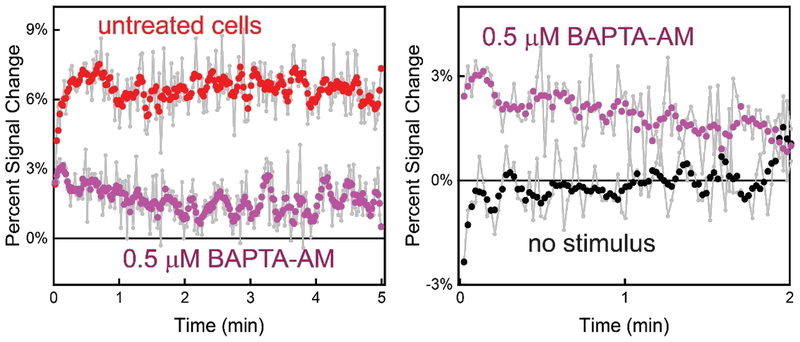Figure 4.
Treatment with the ([Ca2+]i) chelator BAPTA-AM significantly reduces extracellular ATP after stimulation with Ca2+ (at t=0) as indicated by a lower sensor signal change. (Left) For example, an untreated cell population density of 0.7 × 105 cells/mL exhibits a signal increase of ~ 7% with the addition of Ca2+ (untreated). Conversely, cells treated with BAPTA-AM only exhibited a ~3% signal increase indicating a blocking of ATP release from astrocytes (treated). (Right) Treated cells, however, still released some ATP after evocation with Ca2+. Sensor signal increased ~3% (Ca2+-triggered) compared signal without the addition of Ca2+.

